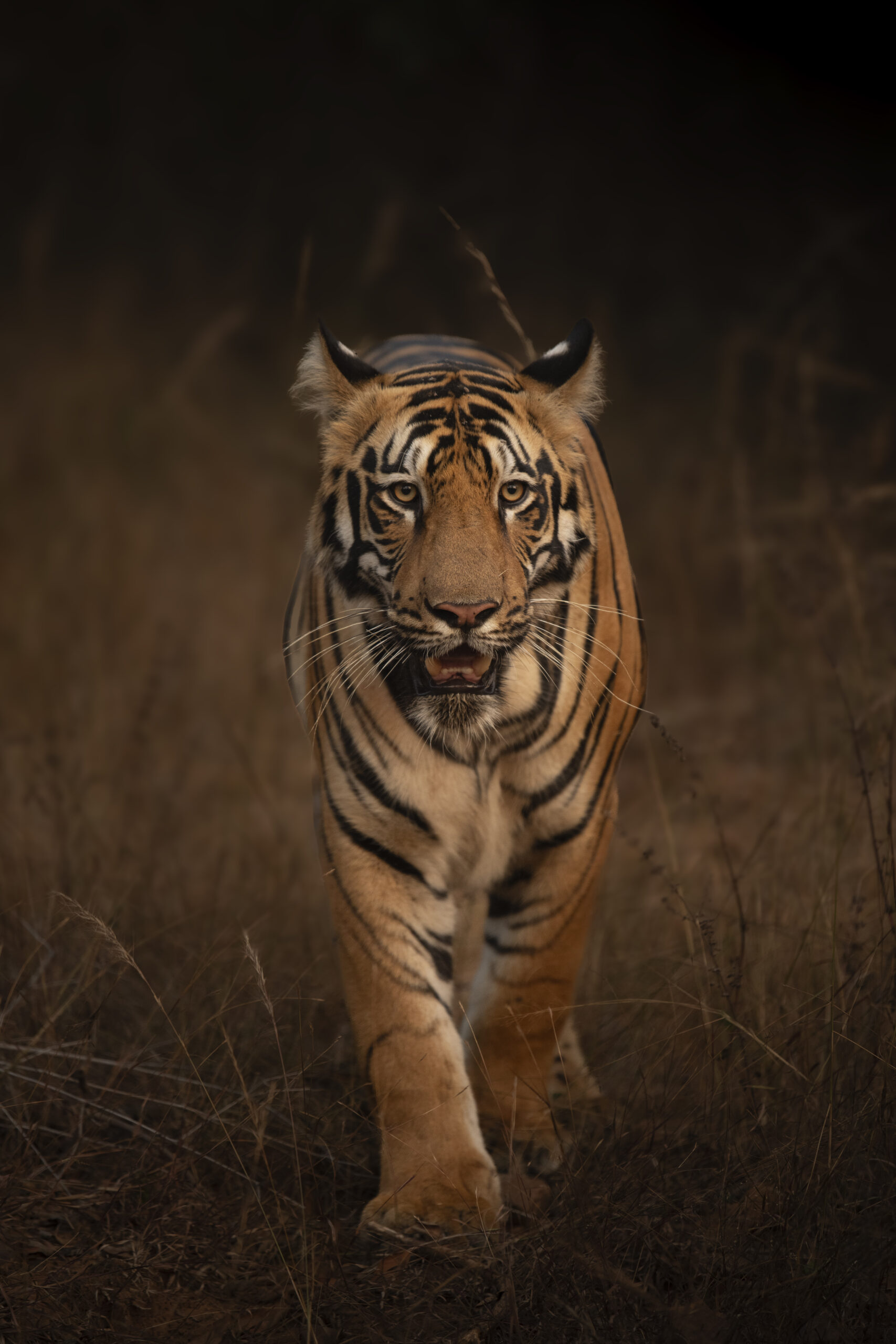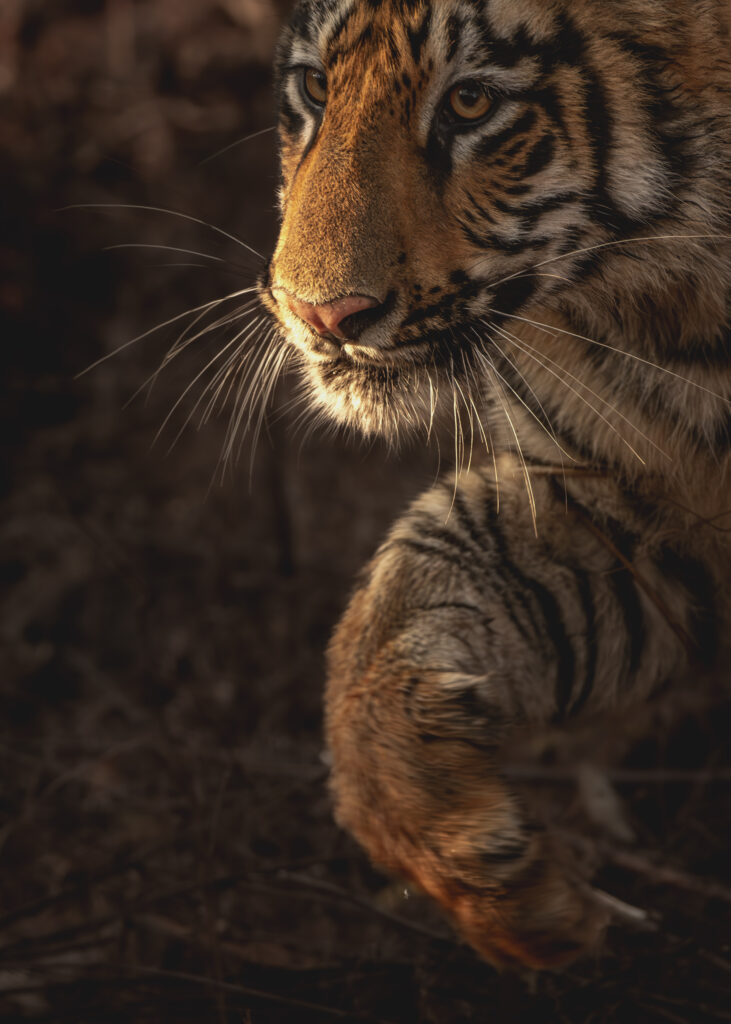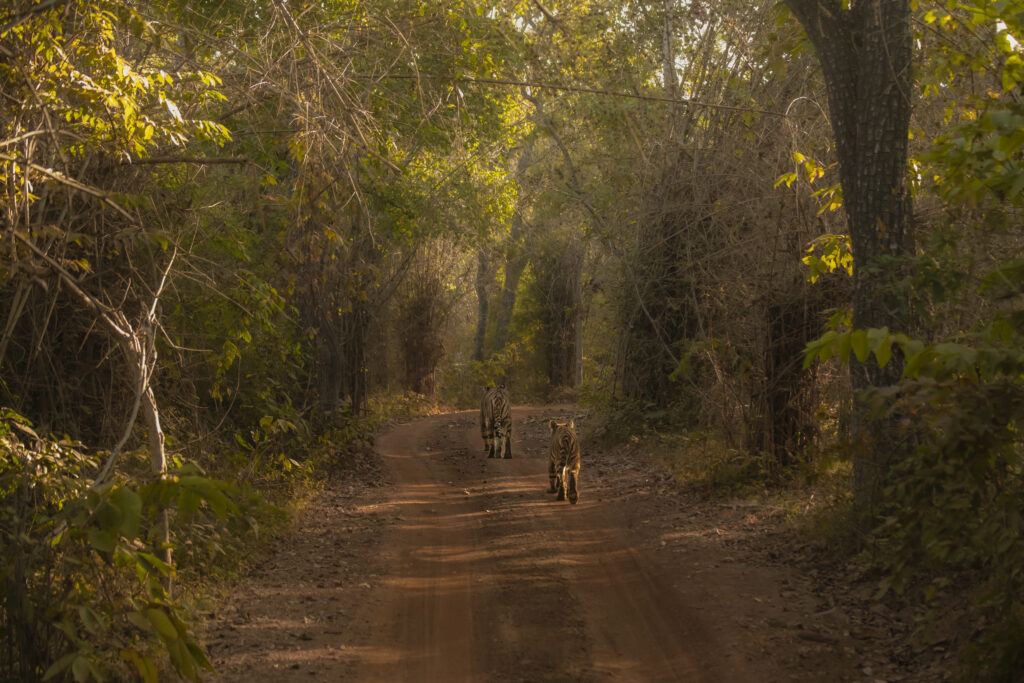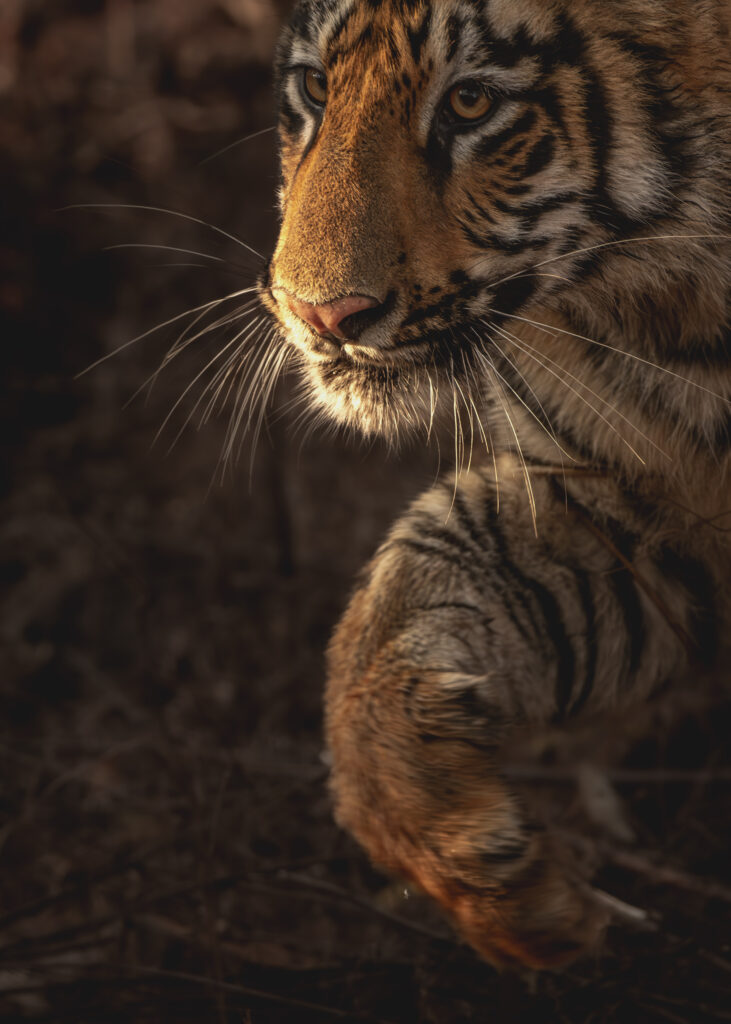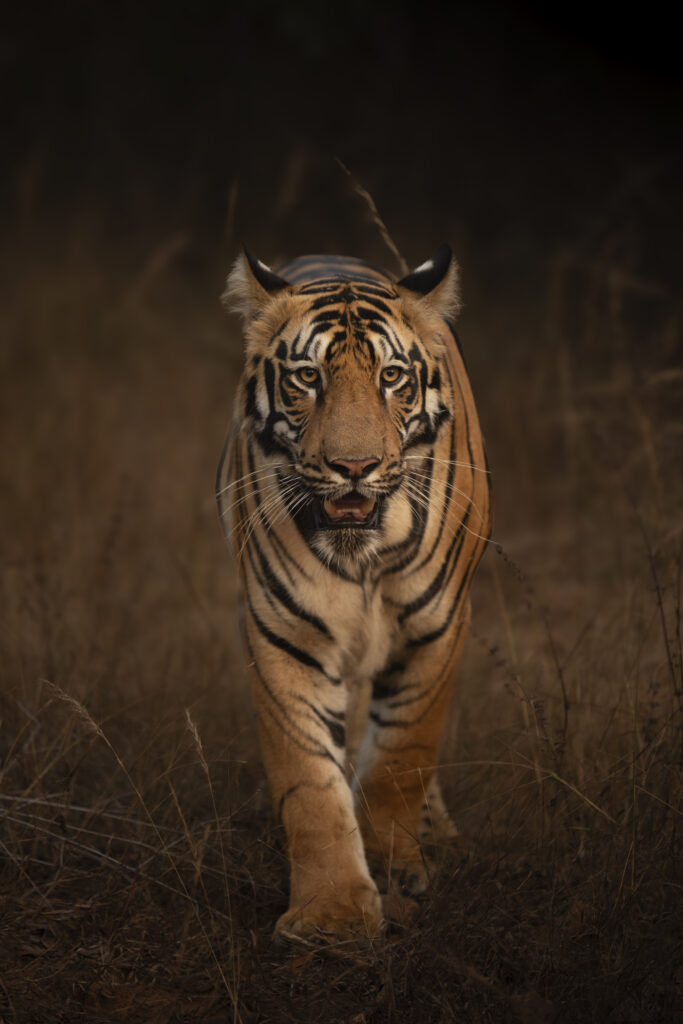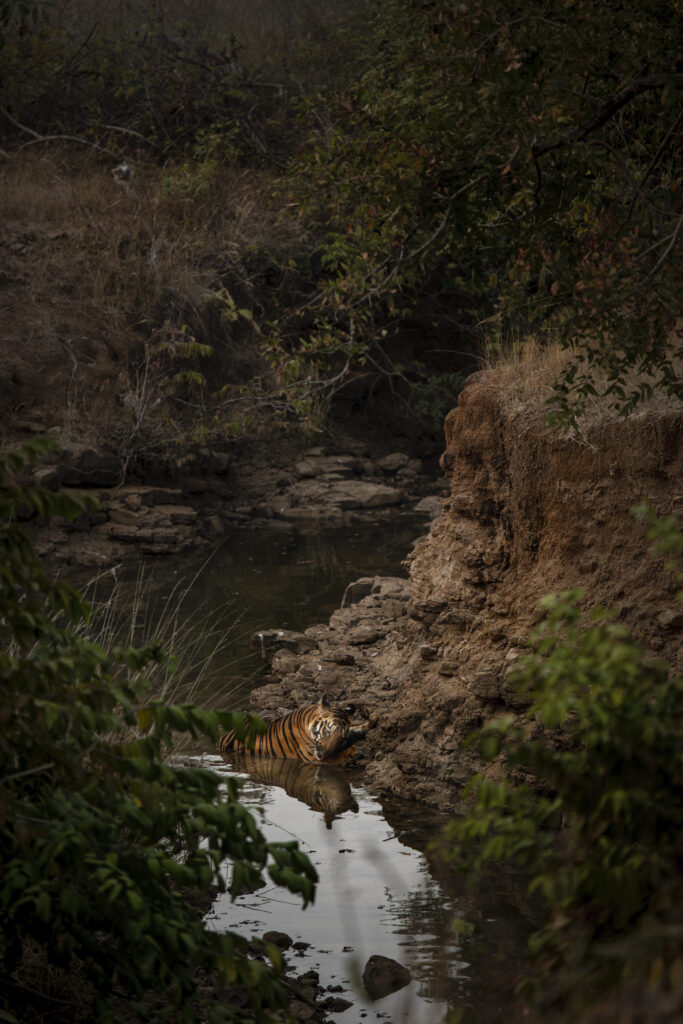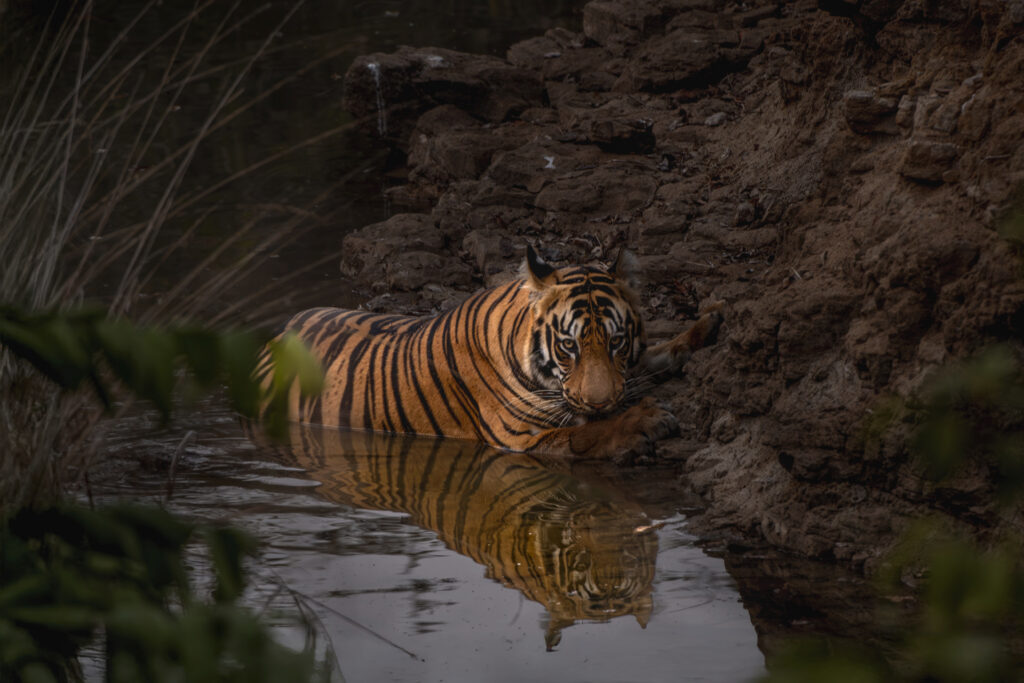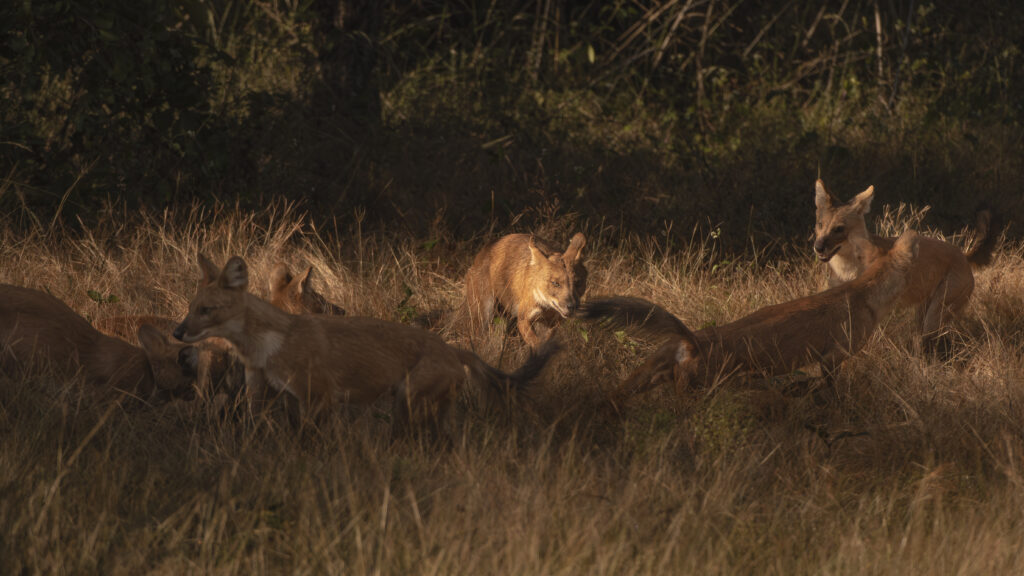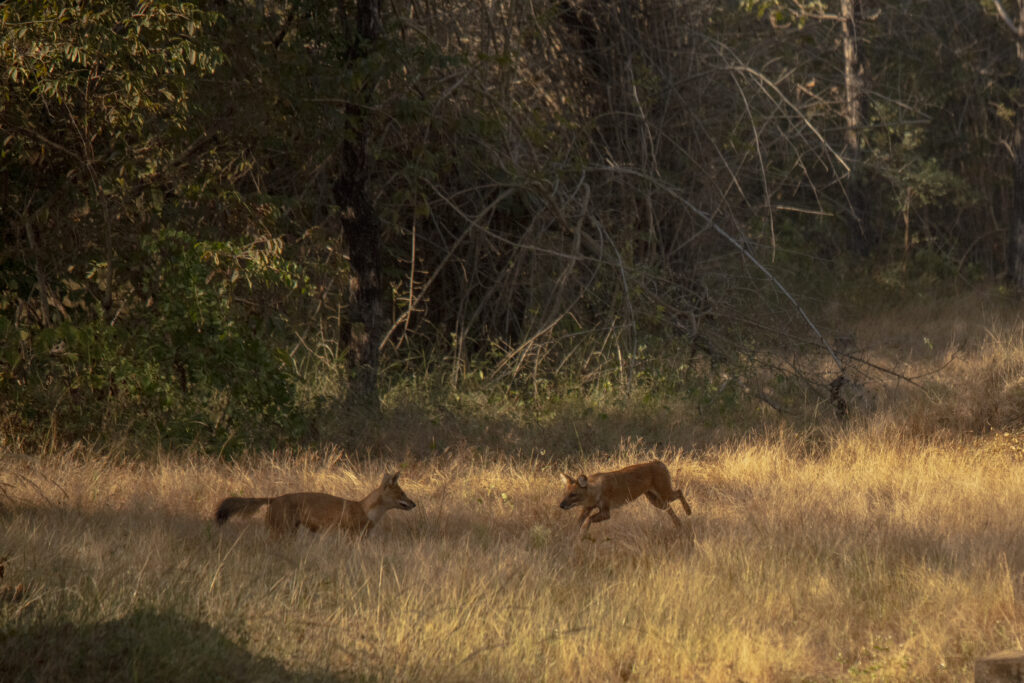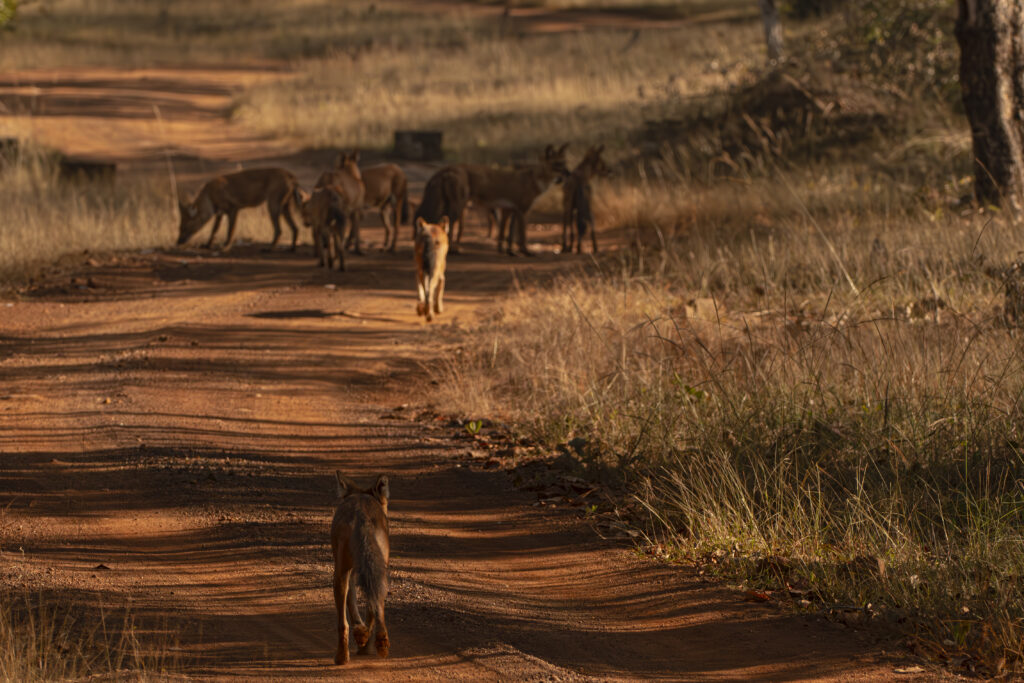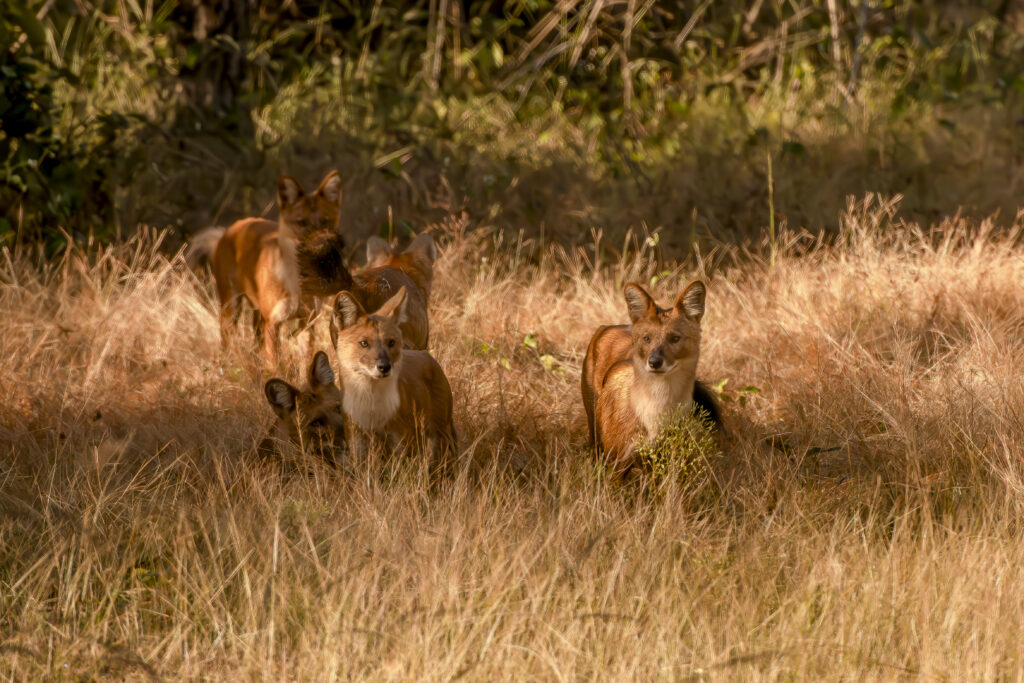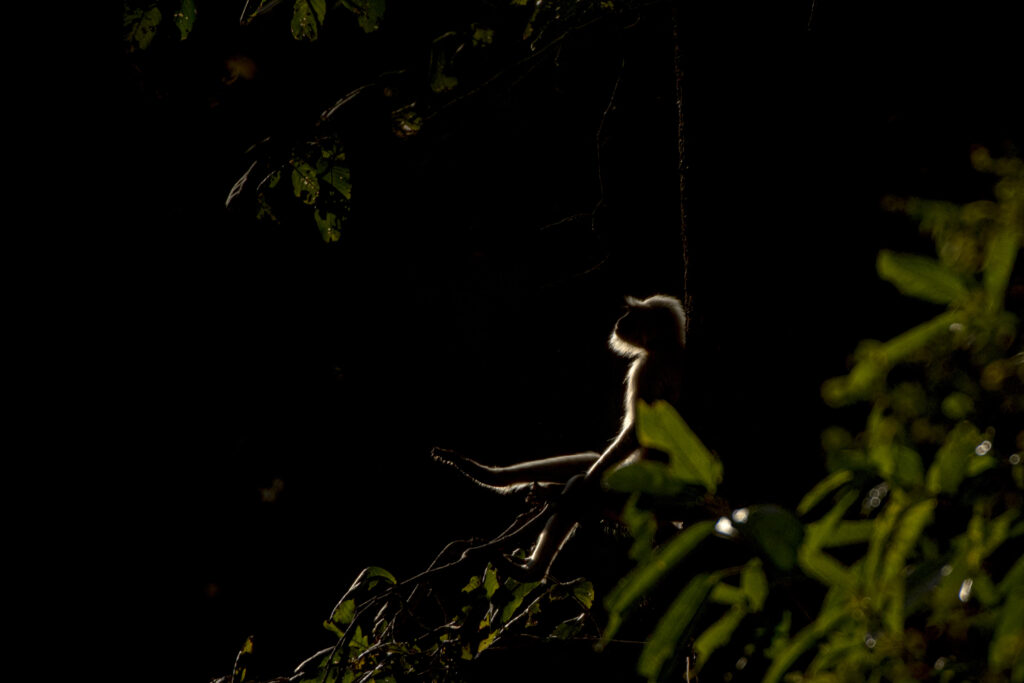January 2025 began with a last-minute trip to Tadoba Andhari Tiger Reserve in Nagpur. Because of the short notice, we couldn’t secure permits for the core zone, and instead, all our safaris were in the buffer zone. But as I learned on this trip, the distinction between core and buffer zones is slowly fading.With Tadoba’s tiger population expanding, these big cats are carving out new territories beyond the core, leading to equally spectacular sightings in the buffer zones. And that’s exactly what happened to us—what was supposed to be a consolation trip outside the core zone turned into one of the most thrilling tiger encounters I’ve ever had.
The First Safari: A Lesson in Skill Over Luck
We set off on an early morning safari, hopeful but not expecting much. Soon, we got news that a tigress and her two cubs had been spotted. The chase was on.
However, we were late to the scene—by the time we reached the spot, the tiger family had already been seen by other lucky vehicles, and we were left struggling for a view from an obstructed angle. There’s nothing more frustrating than watching the excitement of other safari-goers while you barely catch a glimpse.
That’s when experience took over where luck had failed. Our guide, a man who knew the jungle like the back of his hand, made a bold decision—instead of jostling for a compromised view, he chose to move away from the crowd and take a risk.
Using his deep knowledge of tiger movements, he anticipated the tigress’s path and decided to station us far away from the commotion, in a clearing where she might emerge.
For the next 20-25 minutes, we sat in suspense, questioning whether we had made the right call. Then, suddenly…
And there she was.
The tigress emerged with her two cubs, walking straight toward our vehicle. Barely 10 meters away, she moved with majestic ease, cutting through the golden morning light like a queen surveying her kingdom.
We held our breath, cameras in hand, soaking in every second as she passed us and disappeared into the jungle, leaving us in absolute awe.
It wasn’t just a tiger sighting; it was a lesson in patience, strategy, and the incredible instinct of Tadoba’s expert guides.
The Last Safari: A Sunset Surprise
If the first sighting was about skill and calculated risk, the last safari was all about luck and persistence.
We were down to our final 10 minutes before exiting the park. As we prepared to leave, we noticed shepherds moving their cattle away from the bushes—a subtle but significant sign. The cattle looked uneasy, their alert eyes scanning the area. Our guide whispered, “The tiger is close.”
And he was right.
At 5:20 PM, with just minutes left on the clock, we caught a glimpse of a tiger—partially concealed in the fading light, a silhouette against the setting sun.
It was a moment of pure chance, a fleeting but magical encounter that reminded us of why we come to the wild in the first place—to witness nature on its own terms, in its own time.
Beyond Tigers: A Lucky Encounter with Wild Dogs
While most visitors come to national parks to see the majestic tiger, the wild has so much more to offer. One of the most unexpected delights of this trip was a rare sighting of wild dogs (Dholes).
Unlike tigers, whose territories and trails can be tracked, wild dogs are highly unpredictable—their movements are erratic, and sightings come down to sheer luck.
That day, we struck gold—we found a pack of 15-16 dholes, playful, energetic, and completely at ease in their surroundings.
For 10 minutes, we watched them interact, chase each other, and reinforce their tight-knit family bonds—a stark contrast to the solitary nature of the tigers we had encountered earlier.
Experimenting with Photography in the Wild
Tadoba wasn’t just about seeing incredible wildlife—it was also a chance to push creative boundaries with photography.
When you get extended time with an animal, you can experiment with different styles of shooting. One such shot I attempted was a zoom burst technique, something I had wanted to try for a long time. The result? A dynamic and abstract interpretation of the wild, different from the usual crisp, detailed frames.
Another frequently used technique that never disappoints is rim lighting. This time, my subject wasn’t a tiger, a leopard, or any of the typical headliners—it was a langur.
Langurs are everywhere in the jungle, often overlooked by photographers. But this particular langur was different. It had found its own diamond in the jungle—perched high on a tree with the light perfectly positioned behind it, glimmering along its fur.
By simply underexposing the shot, I was able to capture an artistic frame of an otherwise common subject, now bathed in dramatic, golden light.
When photographing wildlife, it’s easy to only chase the spectacular. But sometimes, the most rewarding shots come from the most ordinary subjects—when seen in extraordinary conditions.
Final Thoughts
This trip to Tadoba reinforced an important truth—in the wild, luck may open doors, but it’s skill, patience, and knowledge that turn a good sighting into an unforgettable experience.
From a well-planned tiger encounter to a pure stroke of luck at sunset, these safaris reminded me why I keep coming back to the jungle.
And perhaps, that’s the real magic of the wild—you never really know what awaits, but you always leave with stories worth telling.

